Mathematics of Data Management,Grade 12th,University Preparation (MDM4U)


-
Name:Mathematics of Data Management,Grade 12th,University Preparation (MDM4U)
-
Grade:Grade 12th
-
Prereq:Functions,Grade 11th,University Preparation (MCR3U)
-
Code:MDM4U
-
Type:University Preparation
-
Credit Value:1
-
Develop Date:2021-03-01
-
Course Price:CAD $1300
-
Status:Active
Course Description:
This course broadens students's understanding of mathematics as it relates to managing data. Students will apply methods for organizing and analyzing large amounts of information; apply counting techniques, probability and statistics in modeling and solving problems, and carry out a data management investigation that integrates the expectations of the course and encourages perseverance and independence. Students planning to pursue university programs in business, the social sciences, or the humanities will find this course of particular interest.
Aims and Objectives:
- Describe tools for data management and gives their name also.
- Explain the difference between simple probabilities and theoretical probabilities.
- Define independent events by providing a suitable example.
- Explore dependent events and give examples for better understanding.
- Demonstrate some sampling techniques and name them also.
- Identify the techniques of collecting and organizing data to solve a problem.
- Explain some principles that are useful in data collection.
- Explore the terms of central tendency, spread, and distribution.
- Detecting relationships between variables and developing mathematics.
- Explore ideas and methods for counting, especially in complex situations.
- Demonstrate mathematical logic for counting possible arrangements or outcomes.
- Solve problems involving probability of events or combinations of events.
- Solve problems involving application of permutations and combinations to determine probability.
- Demonstrate an understanding of discrete probability distributions and their representation.
- Determine expected values and solve related problems from variety of applications.
- Explore understanding of continuous distributions by giving examples.
- Investigate different shapes of distribution according to different situations.
- Explore normal distribution providing a well-explanatory example.
- Investigate comparison between normal and binomial distributions.
Expectations:
- Counting & Probability
Throughout this course, students will:
- Solve problems involving the probability of an event or a combination of events for discrete sample spaces.
- Solve problems involving the application of permutations and combinations to determine the probability of an event.
- Probability & Distributions
By the end of this course, students will:
- Demonstrate an understanding of discrete probability distributions, represent them numerically, graphically, and algebraically, determine expected values, and solve related problems from a variety of applications.
- Demonstrate an understanding of continuous probability distributions, make connections to discrete probability distributions, determine standard deviations, describe key features of the normal distribution, and solve related problems from a variety of applications.
- Organization of Data for Analysis
By the end of this course, students will:
- Demonstrate an understanding of the role of data in statistical studies and the variability inherent in data, and distinguish different types of data.
- Describe the characteristics of a good sample, some sampling techniques, and principles of primary data collection, and collect and organize data to solve a problem.
- Statistical Analysis
By the end of this course, students will:
- Analyze, interpret, and draw conclusions from one-variable data using numerical and graphical summaries.
- Describe the characteristics of a good sample, some sampling techniques, and principles of primary data collection, and collect and organize data to solve a problem.
- Demonstrate an understanding of the applications of data management used by the media and the advertising industry and in various occupations.
- Culminating Data Management Investigation
By the end of this course, students will:
- Design and carry out a culminating investigation that requires the integration and application of the knowledge and skills related to the expectations of this course.
- Communicate the findings of a culminating investigation and provide constructive critiques of the investigations of others.
Unit-wise Progression:
|
Unit
|
Title and Subtopics |
|
Unit 1 |
Introduction to Probability
-Hours: 13 |
|
Unit 2 |
Permutations
- Hours:15 |
|
Unit 3 |
Combinations
- Hours: 15 |
|
Unit 4 |
Probability Distributions for Discrete Variables
- Hours: 13 |
|
Mid-Term - Hours: 2 |
|
|
Unit 5 |
Organization of Data for Analysis
- Hours: 11 |
|
Unit 6 |
One-Variable Data Analysis
- Hours: 12 |
|
Unit 7 |
Probability Distributions for
- Hours: 15 |
|
Unit 8 |
Two-Variable Data Analysis
- Hours: 6 |
|
Culminating Activity – 5 Hours |
|
|
Final Term – 3 Hours |
|
|
Total – Hours 110 |
|
Teaching/Learning Methodologies:
This course supports learning by providing students with opportunities to review and activate prior knowledge (e.g. reviewing concepts related to trigonometry and geometry from prior mathematics courses) in order to gain new skills. The course further leads students toward recognizing opportunities to apply the knowledge they have gained to solve problems. This course models the use of spreadsheet software, TVM spreadsheet, and additional software like Demos® which will allow students to investigate the key concepts of the course Outside the Box. This course connects the concepts taught to real-world applications, such as exponential decay, simple harmonic motion and The Golden Ratio. With the help of examples, practice problems, and solution videos, the course models various ways to demonstrate understanding poses questions that require students to use different representations as they are working at each level of conceptual development - concrete, visual, or symbolic, and allows individual students the time they need to solidify their understanding at each conceptual stage. Through the use of interactive activities (e.g. multiple choice quizzes, and drag-and-drop activities) students receive instantaneous feedback and are able to self-assess their understanding of concepts. A few of the things students will be provided are the following:
- Lesson plans
- PowerPoint presentations
- Videos
- Reading Packs
- Assignment for Learning
- Assessment of Learning
- Quiz
All of these are a cluster of downloadable and embedded files that will be provided to each candidate with the progression of the course.
E-Learning Approach:
E-learning is not only a training method but it is a learning method that is tailored to individuals. It is found that different terminologies have been used to define learning that takes place online which actually makes difficult to develop a generic definition.
E-learning includes the delivery of content via Internet, Intranet, and Extranet, satellite broadcast, audio-video tape, interactive TV and CD-ROM. The term implies that the learner is at a distance from the tutor or instructor, that the learner uses some form of technology.
With attention to this new system of education that is spreading across the globe its imperative that the content of such study programs are enhanced and modified to serve both the learner and the instructor well whilst dealing with the gap of conventional studying methodologies. Thus the courses promise its reader an experience full of engagement, student-concentric approach, personalization and Interaction. Using a wide array of multimedia tools, cloud based LMS and diverse repository of subject tailored audio-visual material that student can utilize and learn in a stimulated work environment where he’s in charge of his work hours.
Our e-learners paddle through these courses in the mediation of skilled mentors to the finish line with understanding of their subjects application into real world problems following a futuristic model of education.
Strategies for Assessment and Evaluation of Student Performance:
Assessment is the ongoing gathering of information related to the individual student’s progress in achieving the curriculum expectations of the course. To guide the student to his/her optimum level of achievement, the teacher provides consistent and detailed feedback and guidance leading to improvement. Strategies may include:
- Diagnostic assessment
- Formative assessment
- Summative assessment
- Performance assessment
- Portfolio assessment
- Rubrics
- Checklists
The final grade will be based on:
|
Weightage in Percentage
|
Categorical Marking Breakdown |
|
35% |
Course Work |
|
20% |
Mid Term |
|
15% |
Culminating Activity |
|
30% |
Final Exam |
|
Assessment of Learning
|
||
|
Student Product |
Observation |
Conversation |
|
Learning Logs (anecdotal) Assignment Pre-tests (scale/rubric) Quizzes (scale/rubric) Rough drafts (rubric) Graphic organizers (scale) Peer feedback (anecdotal/checklist) Reports (rubric) Essays (rubric) Webbing/Mapping (rubric/scale) Vocabulary notebooks (anecdotal) Visual Thinking Networks (rubric) Tests (scale/rubric) Exams
|
Self-proofreading (checklist) Class discussions (anecdotal) Debate (rubric) PowerPoint presentations (rubric) Performance tasks (anecdotal/scale)
|
Student teacher conferences (checklist) Debate (rubric) Peer-feedback (anecdotal) Peer-editing (anecdotal) Oral pre-tests (scale/rubric) Oral quizzes (scale/rubric) Oral tests (scale/rubric) Question and Answer Session (checklist)
|
Resources Required by the Student:
- Microsoft Suite (Word, Excel, Power-point etc.)
- A laptop, or Mac, or Android, or any other operating system functional enough to use the web browser and use online software.
- Curriculum Reference: The Ontario Curriculum, Maths







